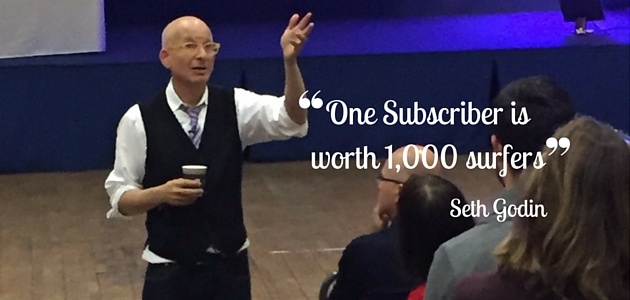

This is blog six of a six blog sub-series on the topic of social media strategy, part of the ‘All that PR & Marketing Bollox” weekly blog series.
When it comes to social media strategy, it’s very easy to become bogged down in the details and strategy of it all. For those of us who were born well before a time when sharing was implicit in most things we do, I can understand the feeling that it’s all a bit overwhelming.
But when you begin to get a sense of the power of social media and what it can do to grow your business (as outlined in the previous blogs in this series) my hope is that you will enthusiastically adopt it and integrate it into everything you do. Social media, done properly, is not akin to a one-way broadcast or monologue; it’s a dialogue with your contacts—prospects, peers, and interested parties—and a community that amplifies all that you are doing.
With a range of social media channels available, internet consumers have a lot of choice about who to follow and keep in their networks. Keep in mind if you get something wrong and irritate a follower even just once, it’s unlikely they will give you a second chance. After all, why would they? They have a myriad of choices when it comes to other accounts to follow. One unsatisfactory experience—for example if they click on a Twitter link and the posted article is badly-written or doesn’t live up to its ‘click bait’ headline —you won’t get that person back.
For that reason, it’s essential that you consider some social media pitfalls and how to avoid them.
Stay professionally relevant
First, don’t get too personal in the B2B space. While in the celebrity Twittersphere, there’s no such thing as “TMI” (too much information), in the professional context there obviously is. If you have a staff party or amusing office antics, it’s fine to show your company’s personality by posting a silly Tweet, but this can’t make up too much of your feed. While there’s a place to show the human side of your business, if you give your followers too much social trivia, no one will take you seriously. In a similar way to curating your business Twitter timeline, abide by the 80/20 rule, where 80 percent of your posts should be professionally relevant and business-focused, while no more than 20 percent should be driven by personality and fun.
Who is the 'voice' behind your social media accounts?
Another potential pitfall of social media is who you put in charge of your business’ accounts. The days of treating your business’ social media management as an afterthought are long-gone. Despite this, many companies still continue to relegate social media to an intern or low-level staffer, with the somewhat archaic idea that “since they’re young they know how to do stuff like that.” This is riskier than you might consider.
Whoever is managing your social media marketing campaigns and various feeds is essentially a spokesperson for your company—one with arguably more reach than an old-school media spokesperson. Would you hire an intern to stand up in front of a group of tech reporters and talk about your latest project? Of course not. The person behind your social feeds should know your company’s message, tone of voice and brand so well that it is implicit in every Tweet, post, and share. (Note: If you outsource your social media to a consulting company, choose carefully and make sure you trust the person doing it, it’s very difficult for them to have this kind of intimate knowledge of your business ethos required for an ‘authentic’ social media presence.) In addition, whoever you put in charge of your feeds should have both traditional media training and social media training and be a decent copywriter too. They should have customer service experience so they know how to deal with complaints and issues that escalate quickly on a network like Twitter. You don’t want an intern’s faux pas to quickly become a viral phenomenon that will put your company in the headlines for all the wrong reasons.
Casual followers vs subscribers
The last pitfall is to become so focused on casual followers that you forget about the broader goal: courting actual subscribers. These are people who talk back to you, subscribe to your newsletter and blog feed, write comments on your blog posts and give you feedback about what you’re doing. If you abuse that relationship with one of those people and they ‘unsubscribe,’ then you should mourn.
Last year I had the pleasure of attending a day long Q&A session with marketing superstar and one of my heroes, Seth Godin, in his only Live in London event of 2015 and was genuinely inspired by his positive “can do” attitude and fascinating insight into the world of marketing.
The one quote in particular that got to me was that “one subscriber is worth 1,000 surfers,” or casual followers. Few businesses are seeking the lowest common denominator market these days; they want to find and reach 100% of their specific niche. In his blog - a must for your browser toolbar- Godin writes:
“It's no longer possible to become important to everyone, not in a reliable, scalable way, not in a way that connects us to people who will read ads or take action, not to people who aren't already clicking away to the next thing by the time they get to the second or third sentence.
But it is possible to become important to a very-small everyone, to a connected tribe that cares about this voice or that story or this particular point of view.
It's still possible to become meaningful, meaningful if you don't get short-term greedy about any particular moment of mass, betting on the long run instead. And we need institutions that can reach many of these tribes, that can bind together focused audiences and useful content creators.”
My advice is to build your relevance by being opinionated at all times, different when you can and sharing your wisdom whenever it is requested, appropriate or needed.
Tip #18: Be aware of the pitfalls of social media and consider it a primary part of your overall communications strategy.





Submit a Comment